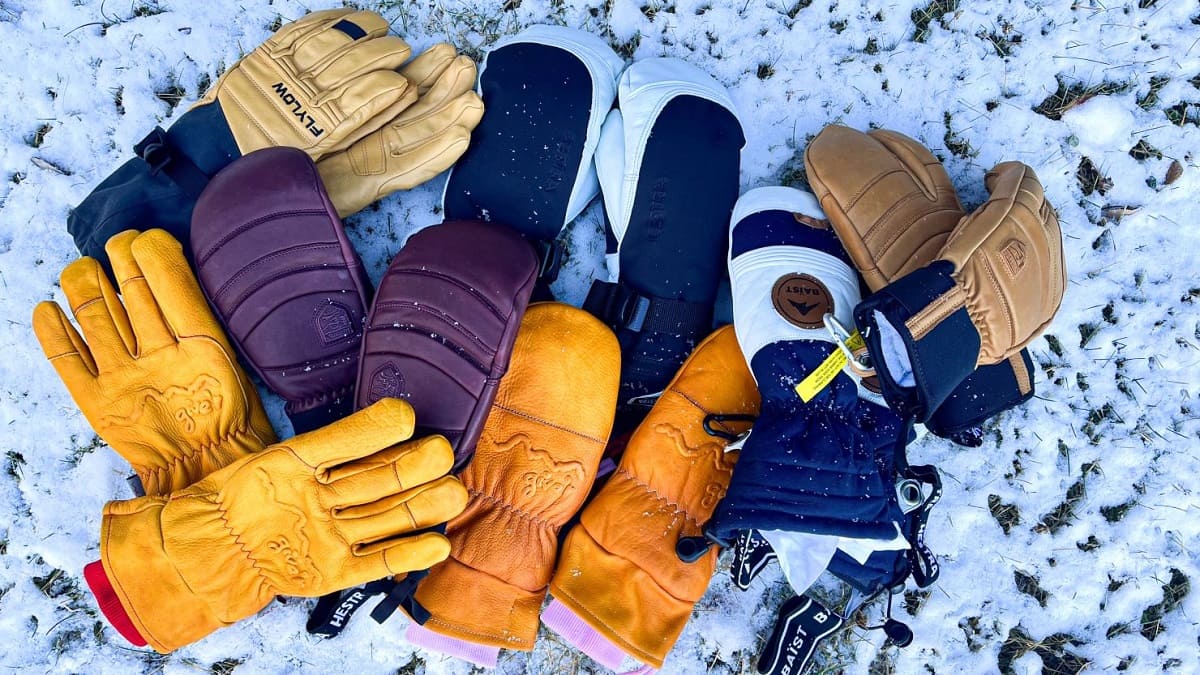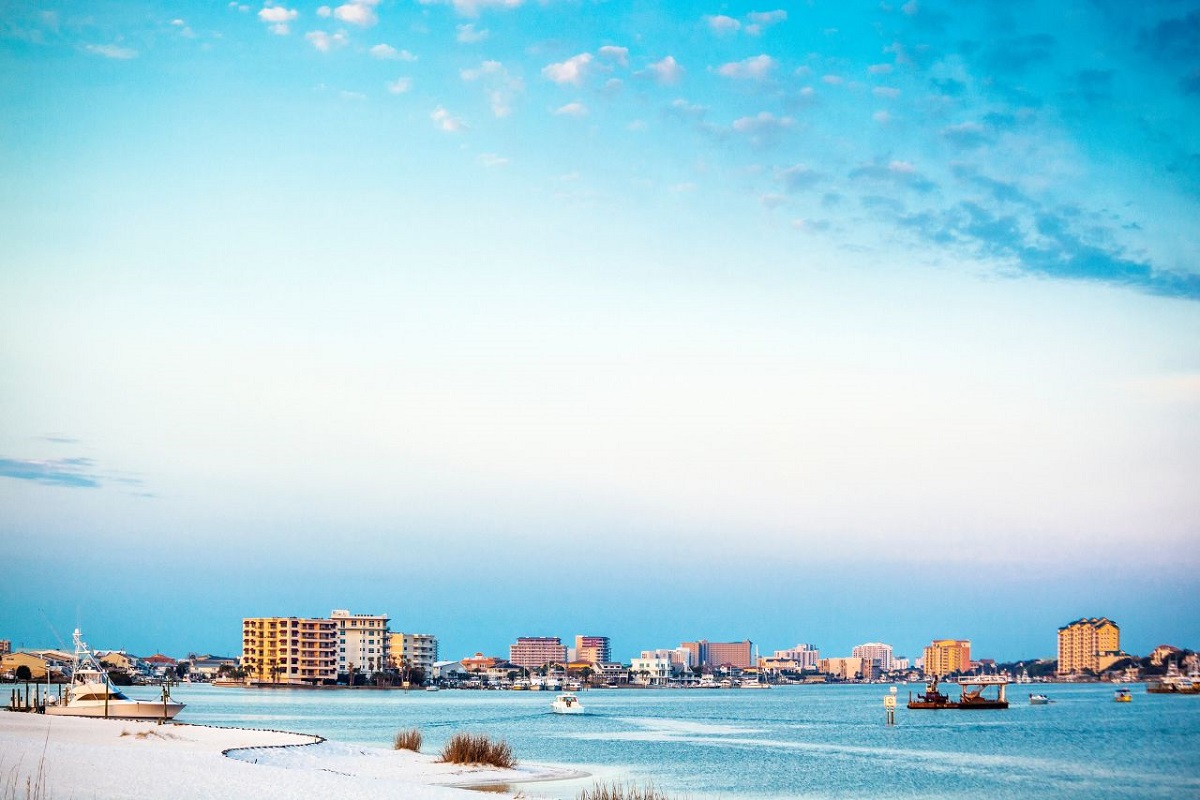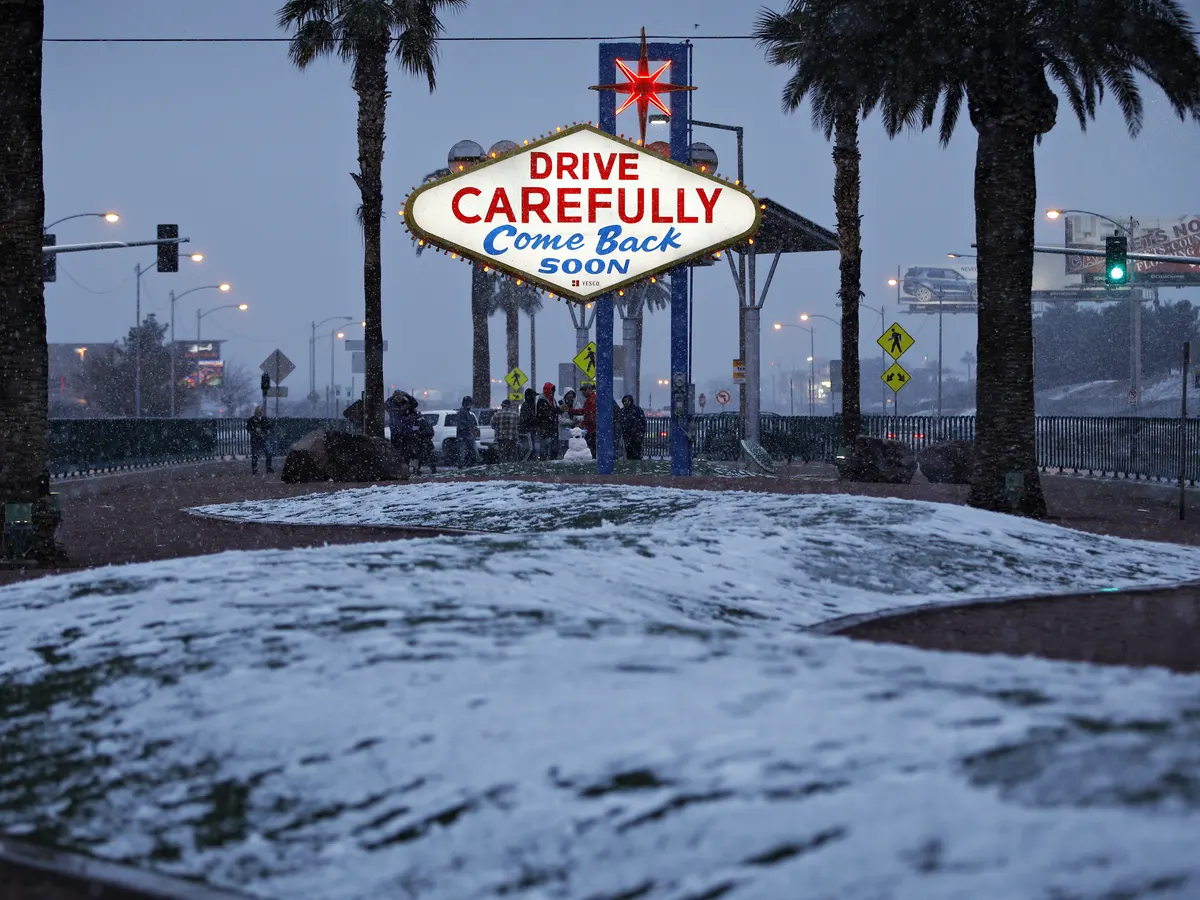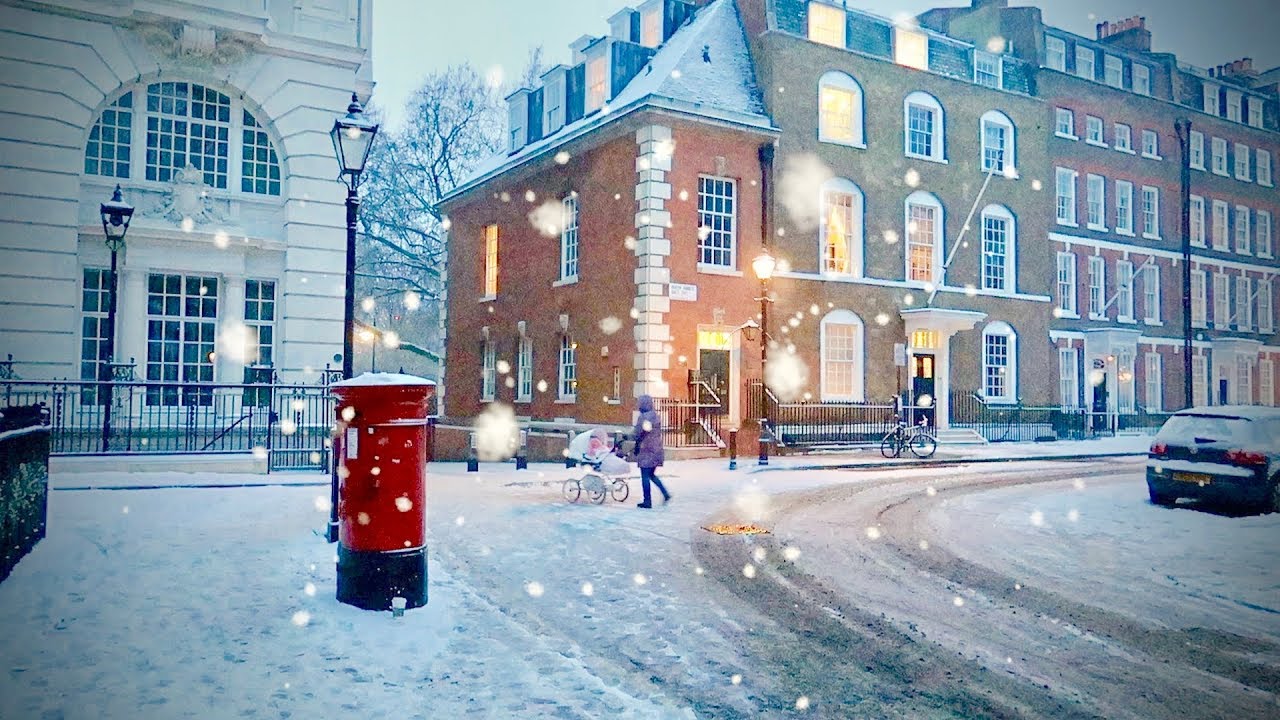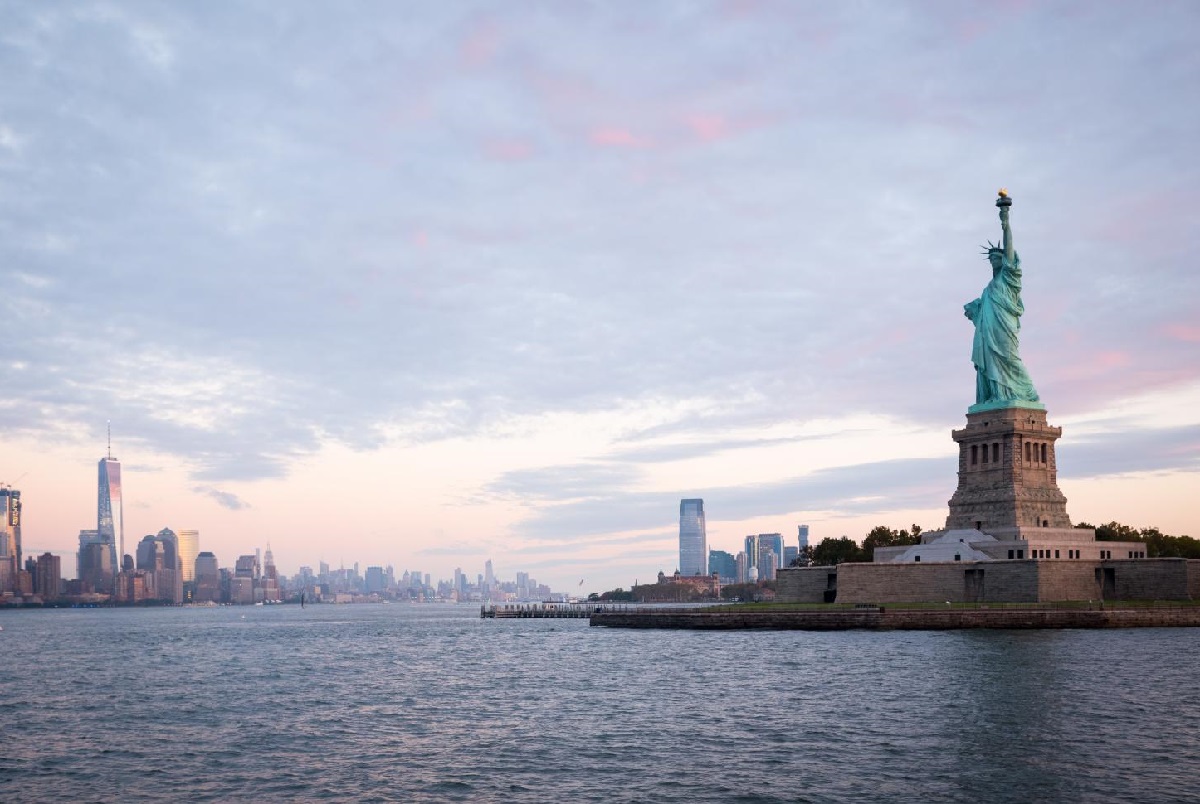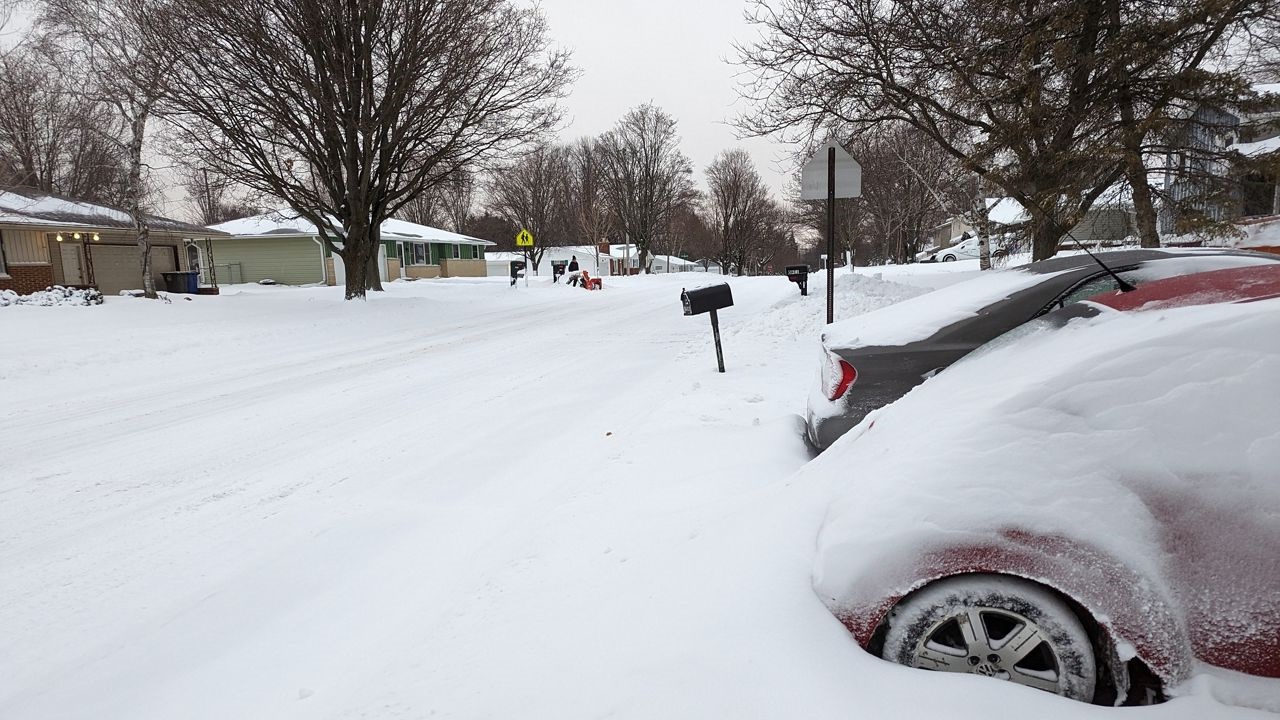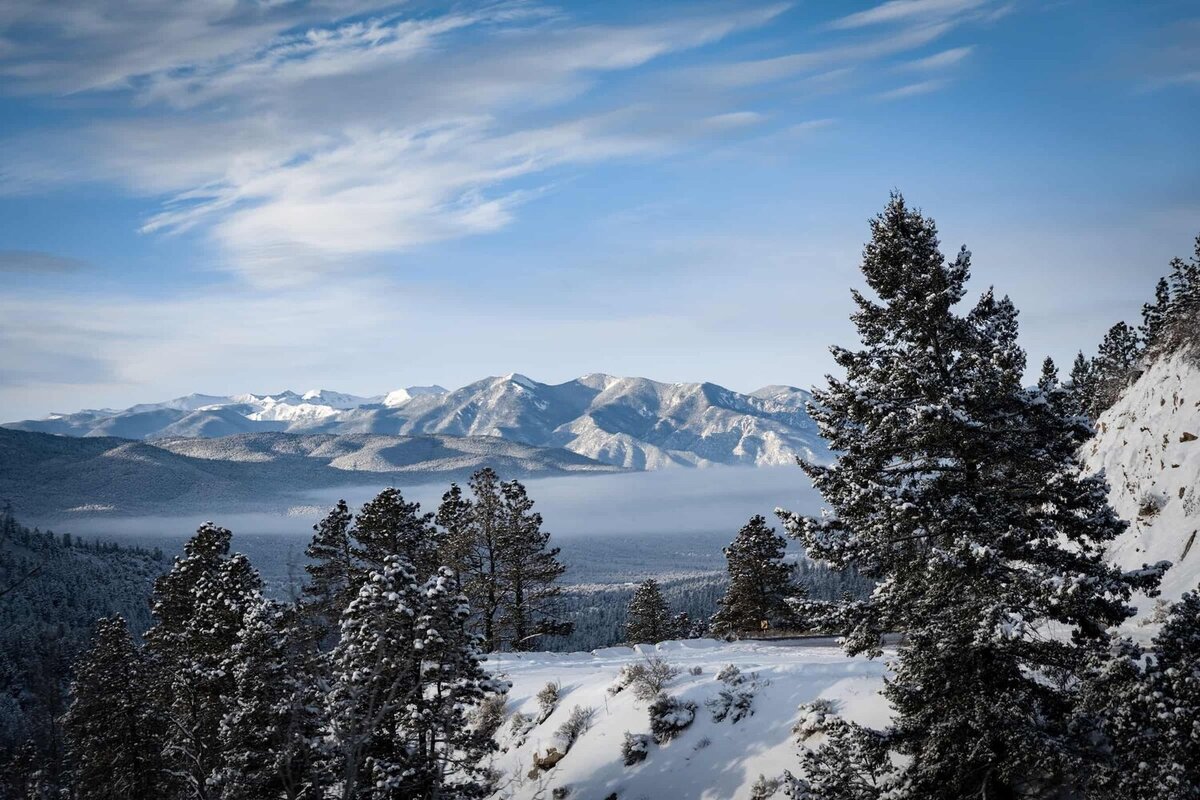Home>Weather and Climate>Snowfall At The Grand Canyon: A Guide To Winter Weather At This Iconic Destination
Weather and Climate
Snowfall At The Grand Canyon: A Guide To Winter Weather At This Iconic Destination
Published: March 7, 2024
Experience the beauty of snowfall at the Grand Canyon and plan your visit with our guide to winter weather. Learn about the weather and climate at this iconic destination. Discover the best times to visit and what to expect during the winter months.
(Many of the links in this article redirect to a specific reviewed product. Your purchase of these products through affiliate links helps to generate commission for Temperatures.com, at no extra cost. Learn more)
Table of Contents
- What to Expect: Winter Weather at the Grand Canyon
- Best Activities: Enjoying the Grand Canyon in the Snow
- Tips for Visiting: Navigating Winter Conditions at the Grand Canyon
- Safety Precautions: Staying Safe in the Snow at the Grand Canyon
- Where to Stay: Accommodations for a Winter Visit to the Grand Canyon
What to Expect: Winter Weather at the Grand Canyon
The Grand Canyon, a natural wonder of the world, undergoes a stunning transformation during the winter months. As the temperatures drop and snow blankets the landscape, the canyon takes on a serene and ethereal beauty. Understanding the winter weather at the Grand Canyon is crucial for anyone planning a visit during this time. Here's what you can expect:
-
Snowfall: Winter at the Grand Canyon brings with it the possibility of snowfall. The higher elevations of the North Rim receive significantly more snow than the South Rim, often creating a picturesque winter wonderland. The snow-capped cliffs and pinnacles offer a breathtaking contrast to the red rock formations, making for a truly mesmerizing sight.
-
Temperature: Winter temperatures at the Grand Canyon can vary widely. While the South Rim generally experiences milder temperatures, the North Rim can be significantly colder. Visitors should be prepared for sub-freezing temperatures, especially during the early morning and evening hours. Layered clothing, including thermal wear, jackets, and gloves, is essential for staying warm and comfortable.
-
Icy Conditions: As temperatures fluctuate, icy conditions can develop, particularly on the trails and walkways. It's important to exercise caution and wear appropriate footwear with good traction to prevent slipping. Additionally, some areas of the park may be temporarily closed or inaccessible due to icy conditions, so it's advisable to check for any updates or alerts before embarking on hikes or outdoor activities.
-
Shorter Days: Winter brings shorter daylight hours, which can impact outdoor exploration. Visitors should plan their activities accordingly, taking into account the reduced daylight for hiking, sightseeing, and photography. The early sunsets also provide an opportunity to witness the canyon bathed in the warm hues of twilight, creating a magical ambiance for capturing memorable moments.
-
Dynamic Weather: The weather at the Grand Canyon can be unpredictable, with rapid changes in conditions. Snowstorms and gusty winds are not uncommon during the winter months, adding an element of excitement to the experience. Being flexible and adaptable to changing weather patterns is essential for making the most of a winter visit to this iconic destination.
Understanding and preparing for the winter weather at the Grand Canyon is essential for a safe and enjoyable experience. By embracing the unique characteristics of the winter season, visitors can witness the canyon's timeless beauty in a new and captivating light.
Read more: Snowfall In Prescott, Arizona
Best Activities: Enjoying the Grand Canyon in the Snow
Exploring the Grand Canyon during the winter months offers a myriad of unique and enchanting experiences. The snow-covered landscape transforms this iconic destination into a winter wonderland, providing visitors with opportunities for unforgettable adventures. Here are some of the best activities to enjoy at the Grand Canyon in the snow:
-
Scenic Winter Hikes: The Grand Canyon's trails take on a new allure during the winter, offering hikers a chance to witness the breathtaking beauty of the canyon adorned in snow. The South Rim trails, such as the Rim Trail and the Bright Angel Trail, provide stunning vistas of the snow-dusted canyon, while the North Rim trails, including the Transept Trail and the Cape Royal Trail, offer a more secluded and serene hiking experience. Hikers should be equipped with appropriate gear, such as traction devices for their shoes, to navigate the snowy and icy terrain safely.
-
Photography: Winter at the Grand Canyon presents photographers with a captivating canvas of contrasts. The snow accentuates the intricate details of the canyon's rock formations, creating striking compositions against the white backdrop. The soft, diffused light of the winter sun adds a magical quality to photographs, making it an ideal time to capture the canyon's timeless beauty. From sunrise to sunset, the changing light conditions offer endless opportunities for capturing stunning images.
-
Snowshoeing and Cross-Country Skiing: Embracing the winter sports opportunities at the Grand Canyon allows visitors to explore the snow-covered trails in a unique and exhilarating way. Snowshoeing and cross-country skiing provide access to areas that may be less traversed during other seasons, offering a sense of tranquility and seclusion amidst the winter landscape. The North Rim, with its higher snowfall, is particularly well-suited for these activities, providing a chance to immerse oneself in the pristine beauty of the winter wilderness.
-
Canyon Viewpoints and Overlooks: The viewpoints along the rim of the Grand Canyon offer awe-inspiring panoramas that are equally captivating in the winter. The snow-dusted cliffs and the play of light and shadows create a mesmerizing spectacle, inviting visitors to pause and take in the grandeur of the canyon. Whether it's gazing out from Mather Point on the South Rim or Point Imperial on the North Rim, the winter vistas are sure to leave a lasting impression.
-
Stargazing: Clear winter nights at the Grand Canyon provide an unparalleled opportunity for stargazing. The crisp, cold air and the absence of light pollution create ideal conditions for observing the night sky in all its splendor. Visitors can marvel at the celestial display above the canyon, with the winter constellations and the Milky Way casting a mesmerizing glow over the snow-covered landscape.
Engaging in these activities allows visitors to embrace the tranquility and majesty of the Grand Canyon in a distinctively beautiful setting. Whether it's embarking on a snowy hike, capturing the canyon's winter allure through photography, or reveling in the serenity of the winter wilderness, experiencing the Grand Canyon in the snow is a truly unforgettable adventure.
Tips for Visiting: Navigating Winter Conditions at the Grand Canyon
Visiting the Grand Canyon during the winter months offers a unique and awe-inspiring experience, but it also presents certain challenges due to the weather conditions. To make the most of your winter visit to this iconic destination, it's essential to be well-prepared and informed. Here are valuable tips for navigating the winter conditions at the Grand Canyon:
1. Check Weather Forecasts:
Stay updated on the latest weather forecasts for the Grand Canyon before your trip. Winter weather can be unpredictable, and being aware of potential snowstorms, icy conditions, or temperature fluctuations will help you plan your activities and pack accordingly.
2. Dress in Layers:
The key to staying comfortable in winter weather is dressing in layers. Start with a moisture-wicking base layer to keep sweat away from your skin, add an insulating layer for warmth, and top it off with a waterproof and windproof outer layer. Additionally, wearing a hat, gloves, and warm, insulated footwear is crucial for retaining body heat and protecting extremities from the cold.
Read more: Exploring Colorado’s Winter Weather Patterns
3. Carry Essential Gear:
When exploring the Grand Canyon in winter, it's important to carry essential gear such as traction devices for your shoes to prevent slipping on icy trails, a backpack with snacks and water, a map or GPS device, a first-aid kit, and a flashlight. These items will ensure your safety and comfort while navigating the winter terrain.
4. Plan for Shorter Daylight Hours:
With shorter daylight hours during winter, plan your activities accordingly to make the most of the available daylight. Start your outdoor excursions early in the day to maximize your time for hiking, sightseeing, and photography, and be mindful of sunset times to avoid being caught in the dark.
5. Stay Hydrated and Nourished:
The dry winter air at higher elevations can lead to increased dehydration. It's essential to stay hydrated by drinking plenty of water throughout the day. Additionally, carry high-energy snacks to maintain your energy levels during outdoor activities in the cold weather.
6. Respect Trail Closures:
Certain trails and areas of the Grand Canyon may be closed or inaccessible during winter due to hazardous conditions. Respect any trail closures or advisories issued by the park authorities to ensure your safety and avoid potential dangers.
7. Be Mindful of Wildlife:
Winter is a critical time for wildlife at the Grand Canyon, and animals may be more active in search of food and shelter. Be respectful of wildlife and maintain a safe distance if you encounter any animals during your visit.
By following these tips, visitors can navigate the winter conditions at the Grand Canyon with confidence and make the most of their winter adventure at this extraordinary natural wonder. Embracing the unique challenges and rewards of a winter visit allows for a truly memorable and enriching experience amidst the snow-covered splendor of the Grand Canyon.
Safety Precautions: Staying Safe in the Snow at the Grand Canyon
When venturing into the winter wonderland of the Grand Canyon, it's essential to prioritize safety to ensure a memorable and secure experience. The snow-covered terrain and cold temperatures present unique challenges that require careful preparation and awareness. Here are crucial safety precautions to consider for staying safe in the snow at the Grand Canyon:
1. Trail Conditions and Navigation
Before embarking on any winter hike or outdoor activity, it's vital to obtain updated information on trail conditions and potential hazards. Check with park rangers or visitor centers for the latest trail status, closures, and advisories. Additionally, carry a detailed map, GPS device, or compass to aid navigation, especially in areas where snow cover may obscure trail markers.
2. Winter Gear and Equipment
Proper winter gear and equipment are indispensable for staying safe in the snow at the Grand Canyon. Ensure that you have traction devices for your shoes to prevent slipping on icy or snowy trails. Additionally, pack extra layers of clothing, including a waterproof and insulated jacket, gloves, a hat, and moisture-wicking base layers to stay warm and dry in cold conditions. A backpack with essential supplies such as water, snacks, a first-aid kit, and a flashlight is also crucial for preparedness.
Read more: Destin FL November Climate Guide
3. Cold Weather Preparedness
Winter temperatures at the Grand Canyon can be unforgiving, especially during early mornings and evenings. Be mindful of potential exposure to hypothermia and frostbite by dressing appropriately in layered clothing and insulating materials. Keep an eye on weather forecasts and be prepared to adjust your plans based on changing conditions. It's advisable to carry hand warmers and extra supplies of food and water in case of unexpected delays.
4. Ice and Snow Hazards
Navigating icy and snowy terrain requires caution and attentiveness. Be mindful of slippery surfaces, particularly on exposed rock ledges, stairs, and steep sections of trails. Use trekking poles for added stability and consider the use of snowshoes or crampons for more challenging terrain. Exercise patience and take deliberate steps to minimize the risk of falls or injuries.
5. Emergency Communication
In the event of an emergency or unforeseen circumstances, having a reliable means of communication is essential. Ensure that you have a charged mobile phone with good reception or a two-way radio for areas with limited connectivity. Familiarize yourself with emergency contact numbers and be prepared to provide detailed information about your location if assistance is needed.
6. Wildlife Awareness
Winter is a critical time for wildlife at the Grand Canyon, and encounters with animals are possible. Maintain a respectful distance from wildlife and refrain from approaching or feeding them. Be particularly cautious around elk, deer, and other large mammals, as they may be more active in search of food and may exhibit protective behavior, especially if accompanied by young offspring.
By adhering to these safety precautions and exercising prudence while exploring the snow-covered splendor of the Grand Canyon, visitors can enjoy a fulfilling and secure winter adventure. Embracing the natural beauty of the canyon while prioritizing safety ensures that the experience remains unforgettable for all the right reasons.
Read more: Monthly Destin Water Temperature Guide
Where to Stay: Accommodations for a Winter Visit to the Grand Canyon
Choosing the right accommodations is crucial for a memorable and comfortable winter visit to the Grand Canyon. Fortunately, the area offers a range of lodging options that cater to different preferences and needs, ensuring that visitors can find the perfect place to stay amidst the snow-covered splendor of this iconic destination.
-
Grand Canyon Village: Situated on the South Rim, Grand Canyon Village is the primary hub for accommodations within the national park. Here, visitors can find historic lodges, cozy cabins, and modern hotels that provide convenient access to the breathtaking viewpoints and trails along the South Rim. The village exudes a rustic charm, offering a blend of heritage and contemporary comfort for winter travelers.
-
Yavapai Lodge: Nestled in the heart of Grand Canyon Village, Yavapai Lodge offers comfortable rooms and cabins, making it an ideal choice for those seeking proximity to the canyon's awe-inspiring vistas. The lodge provides a warm and inviting retreat after a day of exploring the winter landscape, with amenities such as dining options, a general store, and easy access to the Grand Canyon Visitor Center.
-
El Tovar Hotel: For a touch of historic elegance, the El Tovar Hotel stands as a timeless icon of South Rim accommodations. Its distinctive architecture and refined ambiance create a sense of old-world charm, offering guests a luxurious and enchanting stay. The hotel's proximity to the canyon's edge allows for unparalleled views of the winter scenery, making it a sought-after choice for discerning travelers.
-
Bright Angel Lodge: With its rustic allure and proximity to the Bright Angel Trailhead, Bright Angel Lodge provides a cozy and inviting atmosphere for winter visitors. The lodge's historic cabins and authentic Southwestern décor capture the essence of the Grand Canyon experience, while its location near the canyon's rim ensures easy access to captivating winter vistas and outdoor activities.
-
Maswik Lodge: Tucked away in a wooded area near the South Rim, Maswik Lodge offers a tranquil retreat amidst the winter landscape. Its comfortable accommodations and proximity to the Grand Canyon's attractions make it a popular choice for visitors seeking a peaceful and nature-immersed stay. The lodge's relaxed setting and convenient amenities provide a welcoming haven for winter explorers.
-
Outside the Park: In addition to lodging within the national park, the surrounding gateway communities, such as Tusayan and Williams, offer a variety of hotels, motels, and lodges that cater to visitors seeking accommodations outside the park boundaries. These options provide convenient access to the Grand Canyon while offering a range of amenities and services for winter travelers.
Choosing the right accommodations sets the stage for a rewarding and comfortable winter visit to the Grand Canyon. Whether opting for the historic charm of lodges within the national park or seeking accommodations in nearby communities, visitors can find the perfect place to unwind and rejuvenate after immersing themselves in the snow-covered grandeur of this natural wonder.
